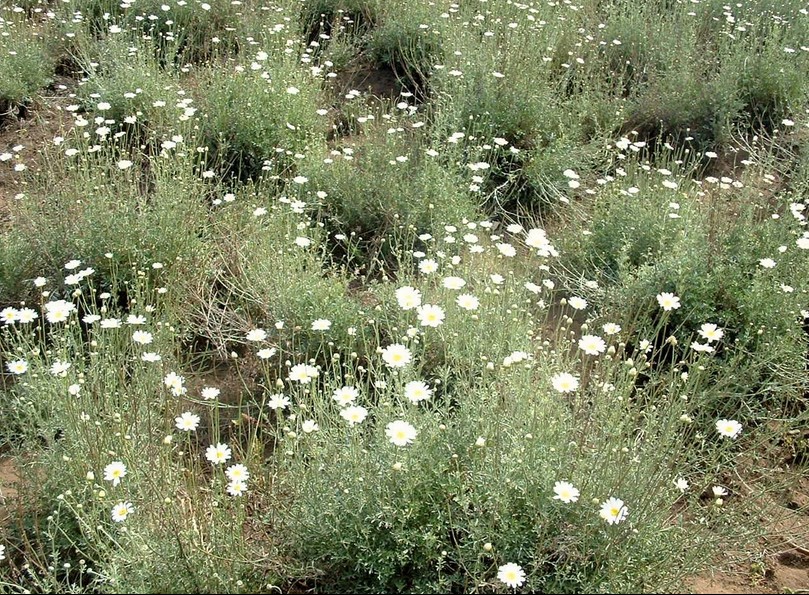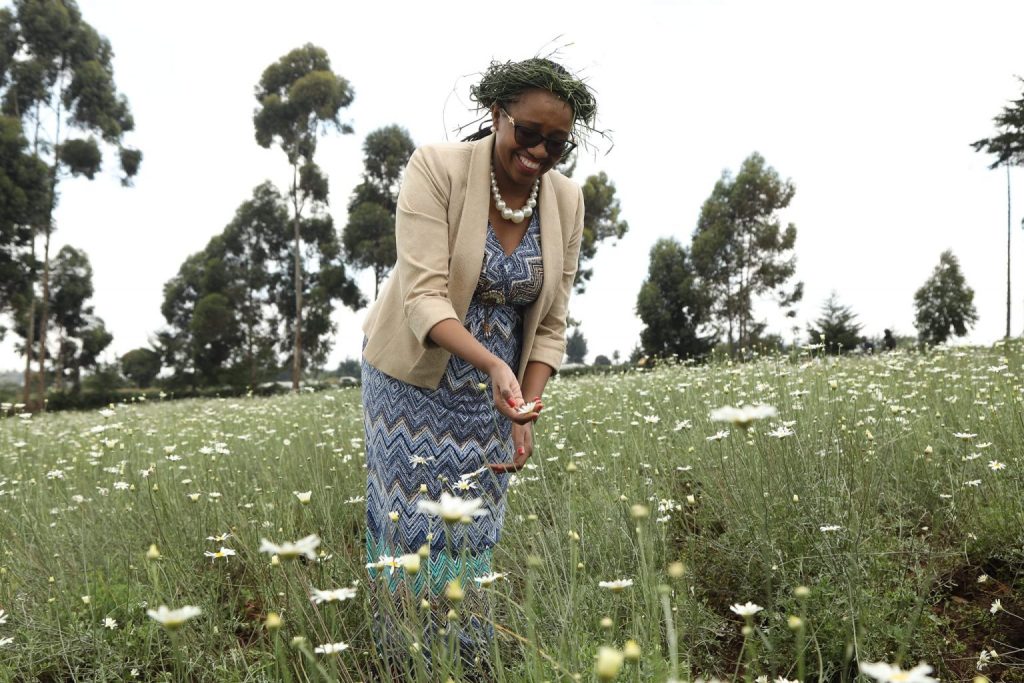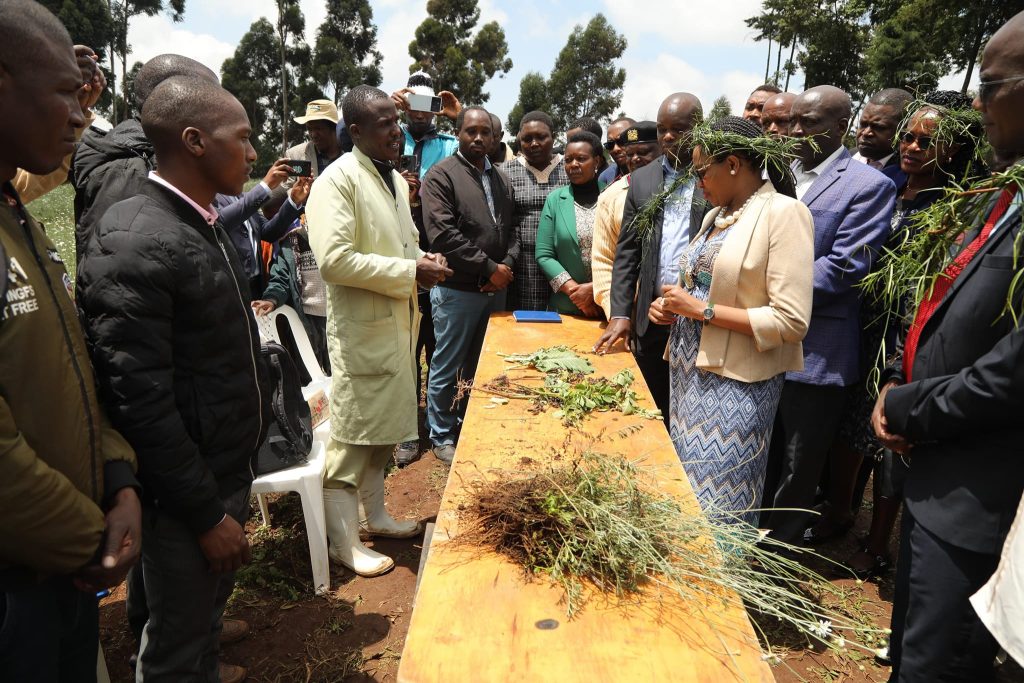
Pyrethrum refers to the Pyrethrum daisy (Chrysanthemum cinerariifolium) from which the insecticidal compound is extracted. Also nicknamed Dalmatian chrysanthemum, this perennial daisy is loaded with chemicals called pyrethrins that are toxic to insects. But is pyrethrum a safe organic pesticide?
Pyrethrum refers to the Pyrethrum daisy (Chrysanthemum cinerariifolium) from which the insecticidal compound is extracted.
About Pyrethrum
If you start reading pesticide labels, all the “P” words will get pretty confusing! Common ingredients in pesticides that start with the letter P include:
- Permethrin: An example of a synthetic pyrethroid, not to be confused with its natural counterpart.
- Pyrethrins: The active chemicals in pyrethrum. “Pyrethrum” and “pyrethrin” are often used interchangeably.
- Pyrethroids: Synthetic pyrethrins. They are much more toxic than natural pyrethrins and are not approved for organic gardening.
- Pyrethrum: The general name for an insecticide derived from the Pyrethrum daisy.
Pyrethrum Facts
Now that you know which “P” words to pay attention to when it comes to pesticides, here are some key properties to consider about pyrethrum and pyrethrins:
- Best for Spot Spraying: Like any powerful compound, pyrethrum should only be used for spot-spraying, heavily infested areas. You should avoid drenching the entire garden with it.
- Breaks Down Quickly: Pyrethrins naturally degrade within days in sunlight. They don’t persist in soil or on produce, allowing use around food crops.
- Grow Your Own: Pyrethrum daisies repel pests. You can grow them yourself and dry the flowers to make your own organic insecticidal powder. The white daisies with yellow centers are quite attractive.
- Kills Beneficial Insects: Pyrethrum is highly toxic to most insects, including beneficial pollinators. This makes it effective against pests, but it also kills beneficial insects that pollinate vegetables and help control pests.
- Other Ingredients: Pure pyrethrum is hard to find. It’s often mixed with piperonyl butoxide (PBO), a toxic, non-organic chemical that increases its potency. Pyrethrins may also be blended with neem oil or insecticidal soap. Read labels carefully for 100% organic ingredients.
- Safety Profile: While touted as “non-toxic,” pyrethrum is not harmless — however, it is one of the least toxic pesticides available. It’s primarily toxic to fish, so keep it out of waterways.
Using Pyrethrum Safely
Before you pick pyrethrum-based pesticides for use, follow these tips for using pyrethrum safely:
- Carefully follow all label instructions for dosage, timing, and personal protective equipment needed.
- Differentiate certified organic pyrethrin products to other toxic synthetic chemicals are added.
- Synthetic pyrethroid products labelled permethrin, cypermethrin, deltamethrin, or tetramethrin are not approved for organic,
- Spot spray infested plants only, avoiding widespread application that can harm beneficial insects.
Pyrethrum Insecticide Considerations
Now that we’ve thoroughly discussed pyrethrum, what it is, and whether or not it’s safe as a pesticide, let’s take a quick recap of everything we’ve learned.
Here are the most significant considerations you should be aware of when evaluating whether or not to use pyrethrum in your organic garden or landscaping:
- Effectiveness: Pyrethrum immediately knocks down flying insects. However, pests can revive if the dosage is too low. Added chemicals like PBO increase potency.
- Environmental Impact: Pyrethrum is highly toxic to fish and aquatic life. Runoff into waterways should be prevented through careful application.
- Harm to Beneficials: Pyrethrins kill pests and beneficial species indiscriminately. Population resurgence can occur when predator bugs are eliminated.
- Safety: Pyrethrins degrade rapidly, limiting accumulation in soil and produce. Toxicity is relatively low compared to synthetic pesticides.
Overall, pyrethrum offers a powerful natural pesticide option for organic growers willing to use it judiciously. Integrated pest management utilizing multiple low-impact control methods is ideal for an ecological garden.
So, is Pyrethrum a Safe Organic Pesticide?
While pyrethrum is organic (coming from daisies) and does indeed work well as a natural pesticide agent, it can have drawbacks if overused. However, when it’s used sparingly by responsible organic growers, though, pyrethrum offers an effective natural pest control option.
Nakuru Regaining it’s Pyrethrum Glory
Nakuru County is committed to restore its former glory in the pyrethrum value chain by ensuring it regains its market value as top income earner for farmers according to Governor Susan Kihika.
Reiterating that that pyrethrum is a flagship project for her government, she stated that pyrethrum could once again become a leading foreign exchange earner for the country, with

significant potential for employment and wealth creation, aligning with Vision 2030 and the National Government’s Bottom-Up Economic Transformation Agenda (BETA)
She was speaking during the official launch of the National Pyrethrum Solar Dryers and Farmers Field Day in Gacharage, Sirikwa Ward, Kuresoi North Sub- County. 16 solar dryers were distributed to farmer groups to help them in drying flowers in a qualitative and timely way. The distributed dryers will help farmers improve drying conditions and pyrethrin content, enhancing post-harvest handling and the quality of pyrethrum.


Historically, Nakuru County produced about 70 percent of the country’s pyrethrum, with a potential production of 12,000 metric tons. Since 2018, the County Government of Nakuru has distributed 42,066,978 pyrethrum seedlings to 7,262 farmers, worth Kshs 144,276,583.
“I am glad my efforts to revive, restore and promote the pyrethrum value chain in Nakuru Country are bearing fruit. Testimonials from farmers confirmed availability of a ready market and timely payment by pyrethrum processing companies such as Kentegra and Pyrethrum Processing Company of Kenya. I urged more farmers to set aside at least half an acre of their land to grow pyrethrum, to move from the current 3,407 acres to 30,000 acres in Nakuru County,” said Kihika.
In Nakuru, pyrethrum is produced in eight out of 11 sub-counties, covering an estimated 3,047 acres. Current production stands at 1,490 metric tons, generating Kshs 298 million for Nakuru farmers.
The Governor encouraged farmers receiving the solar dryers to maintain the equipment properly and join cooperatives to strengthen their position in the value chain as this would allow them to benefit from economies of scale and collective bargaining. She also called for the national government to expedite the national pyrethrum policy to streamline pyrethrum farming.
